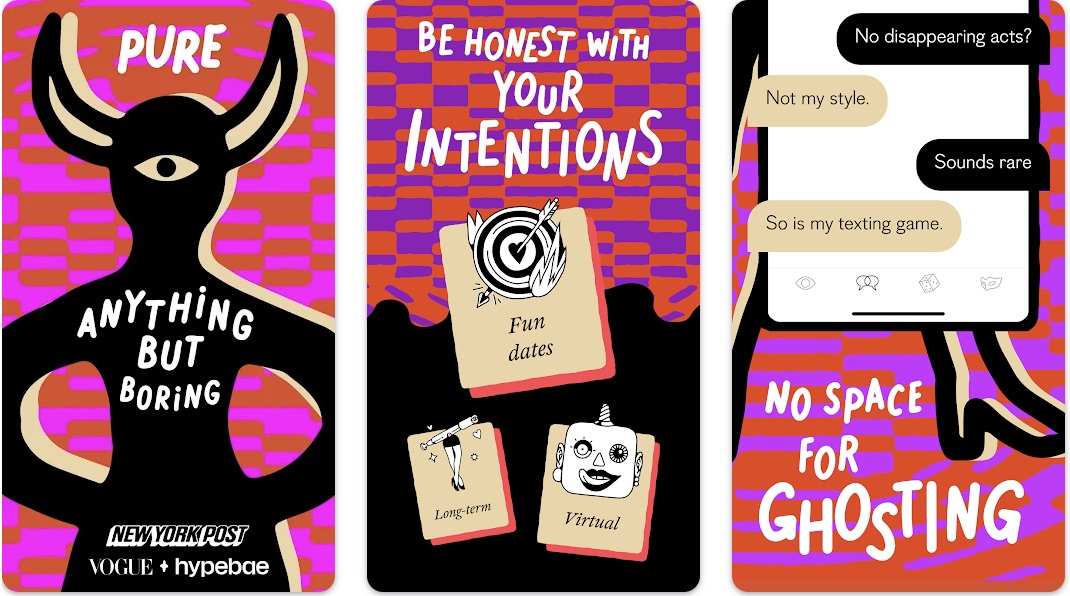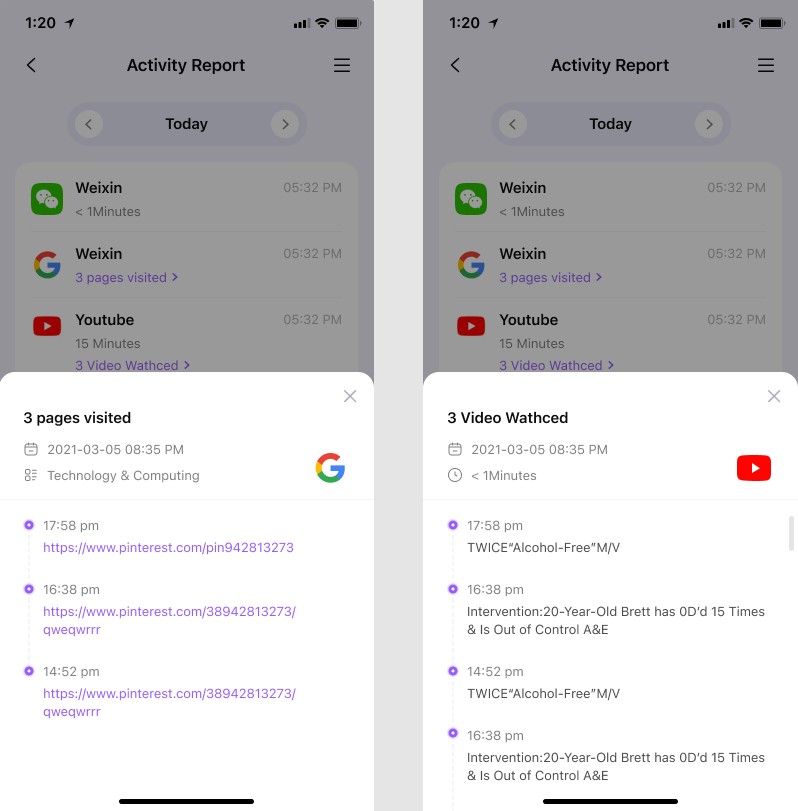In today's digital age, where online interactions are the norm, sexting has become a prevalent form of communication among teens. This has led to the rise of anonymous sexting apps, offering immediate and private alternatives for sharing explicit content.
Sexting involves sending sexually explicit photos, messages, or videos to one or more individuals. While it may seem like a modern way of connecting, it comes with significant concerns around consent, privacy, and potential risks.
Teens today are constantly connected, living much of their lives online. However, this hyper-connectivity often leads to impulsive decisions, such as sharing sensitive content without fully understanding the consequences.
Curious to know more about the hidden dangers of these apps and how to protect your teens? Keep reading to uncover essential insights and practical tips for safeguarding your family in the digital world.

Table of Content
Part 1: What Is Sexting Apps?
Anonymous sexting apps are applications that allow users to send and receive sexually explicit messages, photos, or videos without revealing their identity. These apps often have features that enable users to communicate anonymously, making it difficult for parents to monitor their children's activities.
While some of these apps are designed for casual conversations, others are specifically marketed towards teens and young adults, creating a breeding ground for risky behavior.
Part 2: How Common is Sexting among Teenagers?
Sexting is more common than parents might realize or want to admit. And teens can properly hide sext using anonymous sexting apps. Sharing sexually explicit texts, photos, or video is increasingly common among teens today.
Let's take a closer look at current sexting stats from JAMA Pediatrics Journal and Drexel University to paint a clearer picture.
What Are The Statistics Of Teen Sexting?
- About 27% of teens say they've received sext according to a study in the journal JAMA Pediatrics research that included more than 110,000 teens.
- Nearly 15% of the 110, 000 teens admitted having sent a text.
- About 12% also said they had forwarded a sext without permission.
- Boys were as likely to sext as girls, and older teens were more likely than younger teens to sext.
- The phone was more used to sext than the computer.
- Sexting has increased in recent years, and the results, especially one seen by people other than the intended recipient, could lead to harassment and cyberbullying—perhaps even sexual assault and suicide.
And even more, here are more stats from Drexel University published by the Journal of Sexuality Research and Social Policy:
- More than half the undergraduate students who took part in an anonymous online survey said that they sent a sexually suggestive text when they were teenagers.
- Nearly 30% said they include photos in their sext, and a surprising 61% did not know that sending nude pictures via text could be considered child pornography.
After looking at the above stats, you might wonder if your kid sext. The real question, however, is which anonymous sexting app you kid might be using?
There are countless sexting apps for teenagers out there, so where do you start? Where do you focus your attention?
Part 3. 6 Anonymous Sexting Apps Parents Must Watch Out For
3 Risky Sexting Apps for Android:
1. Fem Dating
Fem is a free video dating app primarily designed for lesbians and bi-curious individuals. While it offers a platform to meet new friends and singles, it also poses risks as teens may encounter inappropriate content or engage in unsafe interactions in chat rooms.

2. Dust
Dust is an app similar to Snapchat. This Android app automatically deletes shared texts after a certain period, making it difficult to trace conversations. Additionally, it disables screenshots in most areas of the app, adding another layer of privacy. Parents should be aware of the potential risks and challenges in monitoring their teens' activities on this platform.

3. PURE – Anonymous Dating & Chat
PURE is an app that emphasizes privacy by allowing users to un-send messages and photos, giving the sender control over whether the recipient can save or copy shared content. While it may seem appealing for privacy-conscious users, parents should be aware of the potential risks, including exposure to inappropriate content and harassment.

3 Risky Sexting Apps for iPhone:
1. Kik
Kik is a popular messaging app that allows users to send texts, pictures, and videos without limits. However, it also includes mini-apps that enable users to engage in various activities, such as chatting with strangers. This makes Kik a risky platform for teens, as it can expose them to inappropriate content and interactions. Parents should be vigilant about the potential dangers of the Kik sexting and monitor their children's usage to ensure their safety.

It requires no real name, so teens' personal information may leak. Parents should notice this app and keep their kids safe.
2. Snapchat
Snapchat is one of the most widely used apps among teens on both iOS and Android. While it is known for its disappearing messages and fun filters, it also poses risks. The app allows users to replay snaps for a fee and take screenshots, which can lead to privacy concerns. Teens may encounter strangers, face harassment, or even fall victim to cyberbullying through this platform. Parents should educate their children about the potential dangers of Snapchat sexting and encourage responsible usage.

3. Tinder
Tinder is a popular dating app that allows users to swipe through profiles and connect with others based on mutual interest. While it is primarily designed for adults, teens may misuse the platform to engage in risky behavior, including sexting. The app's location-based matching and lack of strict age verification can expose teens to inappropriate interactions. Parents should monitor their children's app usage and have open discussions about the potential dangers of using such platforms irresponsibly. Explore more about Tinder sexting.

So, what else should parents know? They can check the guide to identify sexting and understand more about teen sexting. Know why teens do sext, the dangers of sexting, and how to talk about sexting. And you can know top 10 sexting apps for teens here.
Tips: What Should Parents Do If Their Child Is Sexting?
- Start an open conversation and ask why.
- Explain the emotional and legal risks of sexting.
- Use parental control tools like FamiSafe to limit risky app usage.
Try FamiSafe, Block Sexting Apps for Kids.
Part 4: How to Know Kid Is Using Anonymous Sexting Apps Secretly?
If you think "My teen would never sext," it is more likely you're mistaken. And if you feel the only teens who sext are the one that engages in high-risk behavior like drinking, abusing drugs, or skip classes, it is also likely you're wrong.
1. Signs Your Teen Might Be Sexting:
- Becoming unusually protective of their phone
- Reacting strongly when you try to access their phone
- Frequently clearing their browsing or messaging history
Wondering how to confirm your suspicions without damaging trust? Using a parental control tool can provide clarity and peace of mind. Here's a solution worth considering.
2. Use Parental Control Tools to Monitor Kid's Device Activity:
Relying solely on behavioral signs can sometimes lead to misunderstandings. A reliable parental control tool like FamiSafe can help you accurately monitor your teen's activities without jumping to conclusions. With features like activity reports, app blocking, and web filtering, FamiSafe provides a comprehensive solution for ensuring your child's online safety.
- Location Tracking & Geo-fencing
- App Blocker
- Web Filtering
- Screen Time Control
- Smart Parental Control Setting
Key Features of FamiSafe:
1. Activity Report:
Check the activity report to know whether your kids install the sexting app and also block unwanted sexting app.

2. Monitor Explicit Sexting Words:
Detect sexting words from kids' main social media apps with dangerous keywords.
Besides, it comes with Screen time and a Smart schedule plan that allows you to plan reasonably daily screen time at every place.
Explore the daily app activity of your teen to avoid obsessive usage.
3. App block and usage:
Monitor every app and Block any that you found inappropriate for your kid. This is an efficient anti-addiction feature that lets you set a time limit on any app that your child might be addicted to so you can block it for some time.
4. Block Risky Sexting Sites:
Parents can also know whether kids are online sexting and block inappropriate sexting website, then block other dangerous sexting sites by categories for kids. Parents can also block or grant certain websites like sexting site.
Check here to know more about how to protect kids from sexting using FamiSafe
Luckily enough, there is a smarter way to monitor every activity on your teen's phone. You can use parental control. And choosing one of the industry's best tools might save you all the hassle. And FamiSafe is one of the best.
Conclusion
In summary, anonymous sexting apps pose significant risks for teenagers, including privacy concerns and exposure to inappropriate content. Parents should educate themselves and their children about these dangers, maintain open communication, and use tools like FamiSafe to monitor and protect their teens' online activities. Staying informed and engaged is key to ensuring their safety in the digital world.




